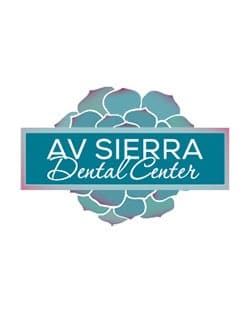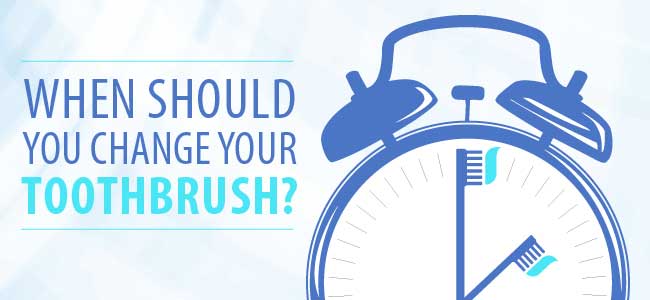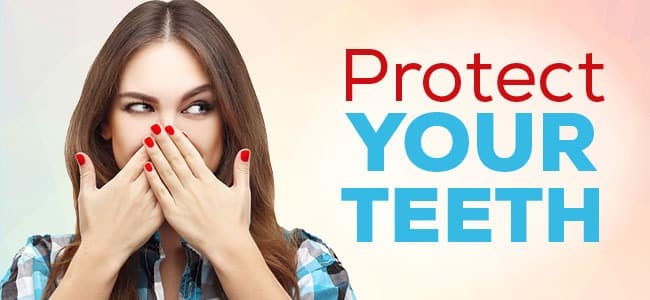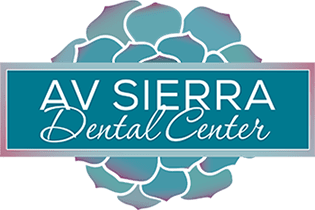Survive Allergy Season

Survive Allergy Season Making the Best of Your Summer and Fall For most parts of the country, summer and early fall are often filled with outdoor adventures. From enjoying the local water hole and hiking to classic barbecues and playing your favorite lawn game, the fun is endless. However, according to the American College of Allergy, Asthma and Immunology, for more than 23 million Americans, nature has created a buzzkill: ragweed. Ragweed may not be that person who signs up to bring only napkins and plastic cups to your barbecue, but the allergy symptoms of ragweed (hay fever) can make your eyeballs feel like an overfilled balloon. While the symptoms of hay fever can be merely uncomfortable and a nuisance, there are instances in which they can significantly hinder your daily life. Hay fever includes the following symptoms: Itchy eyes and throat Nasal congestion Sneezing Runny nose Hives Coughing If left untreated, symptoms can escalate to a sinus infection. Sinus infection symptoms can include facial pain, congestion, bad breath, coughing, and dental pain. How to Fight Back There are a few medicines, remedies, and practical tips you can use to help relieve symptoms and prevent hay fever altogether. Antihistamine: This is your typical allergy medicine. Some examples of over-the-counter brands include Allegra, Zyrtec, and Claritin. Before you use any new medicine, check with your physician to ensure it won’t interfere with anything else you may be taking or an existing health condition. Decongestant: This medicine will help if you are congested (facial pain, stuffy nose, and headaches). Sudafed and Afrin are a couple medicines that can help. Again, check with your physician before taking a new medicine. Humidifier: Keeping the air in your living space warm and humid can help relieve the symptoms of your allergies. Warning: If you are allergic to indoor nuisances (such as dust mites), using a humidifier can actually make your symptoms worse. Stay inside: Check your local weather for pollen counts and windy days. These are good indicators of when you should avoid being outside. If you’re using your air conditioner, it also helps to use a high-efficiency particulate air (HEPA) filter to prevent pollen from getting in. Allergy shots (immunotherapy): If you have tried other medicines and nothing seems to work, your physician may propose taking allergy shots. This is a series of shots that slowly allows your body to acclimate to the allergen causing your symptoms. When to See a Dentist If you have sinus infection and one or more of your upper teeth hurt, this is likely due to your maxillary sinus cavity not being able to drain properly. This puts pressure on your teeth, causing pain. While a sinus infection can be the cause of your tooth pain, your teeth may also be the cause of your sinus infection. If you deal with allergies, it may be hard to determine the cause of the pain in your teeth. If you have a prolonged toothache, it is recommended that you go to your local dentist for an examination. A dentist will be able to determine whether there is an issue with your mouth that is causing your pain. If they do not find anything notable in their examination, they may refer you to a physician who can further assist you. If you have had tooth pain with or without a sinus infection, call AV Sierra Dental Center today to schedule an exam with your Palmdale, CA dentist. Sources Cited “Allergic Rhinitis.” (n.d.). Retrieved July 28, 2016, from https://www.healthline.com/health/allergic-rhinitis#1. “Allergies.” (2011). Retrieved July 28, 2016, from https://www.cdc.gov/healthcommunication/ToolsTemplates/EntertainmentEd/Tips/Allergies.html. Feature, D. F. (n.d.). “Ragweed Pollen and Fall Allergies.” Retrieved July 27, 2016, from https://www.webmd.com/allergies/features/ragweed-pollen. “Ragweed Allergy.” (2015). Retrieved July 28, 2016, from https://acaai.org/allergies/types/ragweed-allergy. “The Causes of a Sinus Tooth Pain.” (n.d.). Retrieved July 27, 2016, from https://crest.com/en-us/oral-care-topics/tooth-pain/the-causes-of-a-sinus-tooth-pain. “What’s the worst season for allergies? (2011)”. Retrieved August 03, 2016, from https://health.howstuffworks.com/diseases-conditions/allergies/outdoor-allergies/worst-season-for-allergies.htm.
When Should You Change Your Toothbrush?

Keep Your Toothbrush in Fighting Shape Everything You Need to Know About Your Toothbrush You hear it time and time again: Brush your teeth at least twice a day. It becomes so routine that you brush your teeth while juggling a few other tasks at the same time. How much time goes by before you notice the shape your toothbrush is in? Have you ever thought to yourself, “I don’t need to clean my toothbrush, my toothbrush cleans me!” The condition of your toothbrush is often the last thing you think about in your busy life, but it plays a significant factor in your oral health. Symptoms of an Unclean, Older Toothbrush The most common issue with an older toothbrush is effectiveness. When the bristles are frayed, its cleaning ability is compromised — leaving your teeth more exposed to bacteria. According to the American Dental Association (ADA), you should monitor and replace your toothbrush more often if you or a family member have: A systemic disease that may be transmissible by blood or saliva A compromised immune system or low resistance to infection due to disease, chemotherapy, radiation treatment, etc. How to Disinfect Your Toothbrush Rinse and air dry. The simplest way to keep your toothbrush clean: After every use, rinse it and keep it upright in an open area. Soak it in hydrogen peroxide. Boil it in hot water. This is another simple option, but be sure the toothbrush is completely cooled before handling/using. No one wants scalded gums. Use an ultra-violet light toothbrush sanitizer. These sanitizers made for toothbrushes (more specifically, electric toothbrush heads) are a good option, but studies show that while they do kill bacteria, they don’t have a distinct advantage over any other method. The ADA warns to be wary of any product that says it will do more than sanitize or reduce bacterial contamination. If you are interested in a toothbrush sanitation product, make sure it is Food and Drug Administration approved. There isn’t an obvious answer as to which method is preferred or best, so do what works for you. Not Recommended Toothbrush Care Microwave: While this idea makes sense on paper, the ADA doesn’t approve. It will most likely kill bacteria on your toothbrush, but zapping it can have adverse effects on the brush itself. Dishwasher: While this is an effective way to clean your toothbrush, the ADA states that this method will also compromise the quality of your brush. How Often Should I Change My Toothbrush? For typical usage with no special circumstances, you should change your toothbrush every three to four months. If you see that your toothbrush bristles are frayed or beginning to fray, replace it. If your toothbrush seems to fray too fast, you are mostly likely brushing too hard — go easy on those teeth! Do I Need to Change My Toothbrush After I’ve Been Sick? Research shows that this is unnecessary. While those germs are still on your toothbrush, your body has the antibodies to fight off anything related to that particular sickness you just got over. With this in mind, don’t share said toothbrush (or any toothbrush, for that matter) with another person, because they can get sick from those germs. To keep your teeth strong and your mouth healthy, the quality of your toothbrush absolutely matters. It is important to keep your brush as clean as possible while you are using it. The most beneficial thing you can do is keep track of how long you have been using your toothbrush and replace it routinely. For more information, contact your Palmdale, CA dentist at AV Sierra Dental Center today. Reference: https://www.ada.org/en/about-the-ada/ada-positions-policies-and-statements/statement-on-toothbrush-care-cleaning-storage-and-
Protect Your Teeth: Preventive Steps Toward Better Oral Health

Taking preventive measures to protect your teeth from decay is essential for maintaining your natural smile. While prevention includes maintaining good at-home oral hygiene practices and making it to your routine dental visits, there are additional steps you can take to help keep your teeth healthy, strong, and safeguarded against the harmful bacteria that leads to decay and cavities. Some of the following preventive measures are commonly associated with protective treatments appropriate for children, but they can be just as beneficial for adult teeth. The next time you pop in for your regular exam, take some time to ask the doctor about whether they are right for you. Sealants Brushing and flossing cleans most of your teeth surfaces, but getting to all of the crevices — especially those located in the back molars and premolars — is difficult. Those tiny dips and pits are perfect for trapping food and bacteria, which often results in the formation of cavities. Dental sealants provide a protective coating that keeps these areas free from food debris. They are made from a resin material that is used to coat the chewing surfaces of the back teeth. It is painted on and seals the nooks and crannies in the teeth, so that food and other plaque-causing materials that cause cavities are kept out. The procedure for applying sealants is simple, painless, fast, and takes only one visit. First the decay is removed from your teeth, and they are thoroughly cleaned and dried. Next the sealant material is painted on the chewing surface. It will naturally bond to the tooth on its own; however, a special light may be used to speed the process, helping the sealant to harden in just a couple of minutes. Fluoride Treatments Fluoride is a naturally occurring mineral that can be found in both food and water. It aids in the prevention of tooth decay and cavities by making teeth resistant to the acids created by plaque and sugars. Fluoride is deposited on tooth enamel when you eat foods and beverages that contain it; it is lost when the acids produced by plaque and sugars eat away at the enamel of a tooth. Tooth decay occurs when the amount of fluoride lost outweighs what is being deposited. Most often fluoride and its use in dental treatments is associated with children and the strengthening of their young, vulnerable teeth. Although fluoride is important for young children, it is also beneficial for adolescents and adults of all ages. In fact, new research indicates that fluoride’s role in fighting tooth decay as we age is just as important as its role in the strengthening and protection of newly developing teeth. A fluoride treatment involves applying fluoride topically to teeth. The in-office fluoride treatment is quick and painless, and it involves applying fluoride in the form of varnish, gel, or foam directly onto the teeth. This can be accomplished by wearing a mouthguard filled with the foam or gel or by having varnish painted directly onto your teeth. Hygiene Services In addition to sealants and fluoride treatments, there are two important hygiene services that can improve your chances of avoiding decay, cavities, and tooth loss. Periodontal treatment: This treatment prevents the progression of periodontal disease and returns teeth and gums to a healthy state. Professional teeth cleanings: Having your teeth cleaned regularly helps prevent gingivitis, tooth decay, and loss of enamel from teeth. Some of the services included during your regular cleaning include: A review of your dental and medical history An oral cancer screening An evaluation of your overall oral health X-rays to detect decay Removal of stains, plaque, and tartar Polishing of all teeth At-home oral health education and instruction Keeping your natural smile for a lifetime is possible when protective measures are taken and the proper dental care is received. Your oral health is our top priority, and making sure your teeth stay healthy and beautiful is our mission. Call us today to find out more about how we can help protect your smile against decay.
Tips for Teaching Your Kids to Floss

Even though baby’s first teeth are temporary, getting an early start on excellent dental hygiene practices, including both brushing and flossing, is essential to a lifetime of good oral health. Dental decay is one of the most common childhood diseases. According to the Centers for Disease Control and Prevention (CDC), 42% of children ages 2 to 11 have had cavities in baby teeth, and 21% of those ages 6 to 11 have had cavities in permanent teeth. Tooth decay not only poses a threat to tiny teeth, it can negatively affect a child’s whole health, as well as how they feel about themselves. One of the longest-lasting benefits of a healthy smile during childhood is the foundation for a healthy self-image. Start Early Brushing You should begin cleaning a baby’s gums after each feeding with gauze or a soft cloth starting immediately after birth. As soon as the baby teeth begin to erupt, you can use a soft-bristled child’s toothbrush to clean your toddler’s teeth. Continue brushing for them until they have the dexterity to take over (approximately around 6 years old). Flossing Flossing is difficult for small, untrained hands. Your child doesn’t have to begin brushing right away, but once their tooth surfaces are almost touching, plaque and food begin to settle in between teeth, which can lead to gum disease and tooth decay. At this point, they should begin learning to floss and doing so at least once a day. Teaching your child to floss can be tricky. The following steps will help you get them off to an easy start. Choose soft, flavored floss that’s gentle on your child’s gums and tastes good. Measure out a length of floss that runs from your fingers to your elbow. Wrap the floss around your child’s fingers as you would your own when flossing, but make sure it isn’t so tight that it cuts off circulation or causes any discomfort. Gently guide your children’s fingers, and show them how to glide the floss between the teeth. Show them how to make the floss into a C shape and curve it carefully beneath the gum line. Make sure they shift the floss to the next finger between each tooth so that they use fresh floss in each space. At first flossing may be difficult and even frustrating for your little one. They may not like wrapping the string around their fingers, or they may just find changing the wrap of the floss too difficult. Fortunately, there are a wide variety of child-friendly floss sticks available in different colors and flavors. They come in packs of 50 to 100, giving your little one room for error. Make sure they dispose of each floss stick after use. If your child is having an extra difficult time learning to floss, or if they have braces, consider trying the Waterpik Water Flosser for Kids. It’s made with a simple design that makes flossing easy for children over the age of 6. It is child safe and designed for small hands, so that your child’s frustration will be alleviated and their teeth will get cleaned properly. As your children develop, they will be able to execute flossing with ease and can decide whether to continue using their flossing stick or a Waterpik, or whether to take the more traditional route. For more information and help educating your child on the importance of their oral hygiene practices, call us today. We prepare you with information and instructions on how to clean your child’s teeth, as well as how to teach your child to clean their own teeth — or we can teach them with you.
Summer is Here! Are your Lips Ready?

“Summer loving had me a blast, oh yeah. Summer loving happened so fast…” —Grease, Summer Nights Its’ the stuff dreams and movies are made of: summer love. Warm summer nights, afternoons at the beach, vacations to the Caribbean—whether you are hoping to meet your next crush or are looking forward to romancing your long-time love —summer is sure to heat things up. Did you know that June 19th is National Kissing Day? Are you ready to get romantic? A healthy mouth and kissable lips are key to having the summer you have been dreaming of. From making sure that your teeth and gums are in top condition, to protecting and caring for your lips so they stay soft and blemish free, there are several measures you can take to stay romance ready all summer long. Tips for a healthy mouth The best way to make sure that your mouth stays healthy and halitosis free is to stay on top of your at-home oral hygiene practices. Don’t forget the basics: Brush twice a day Rinse after brushing Floss daily Take your oral care to the next level. You already know you need to set up routine visits with your dentist to keep your teeth in top condition. Consider the following treatments for extra protection. Regular fluoride treatments can help keep your teeth strong, especially if your water source is fluoride free. Dental sealants can protect your teeth from decay. Consider having them applied to your back teeth. Along with your routine cleanings, try a whitening treatment so that your healthy smile shines through. Taking care of your lips If you are concerned about keeping lips kissable, consider the following tips: Apply balm to your lips before you wash your face. It protects them from drying elements in your cleanser that can cause them to chap and flake. Use a humidifier at night to keep your skin (including your lips) moisturized. Don’t pick at flakey lips. Instead, remove the extra skin with a lip exfoliator or combine sugar and honey for a natural exfoliator. Protect your lips from the rays with sunscreen. If you wear lipstick, try to find one with vitamin E or Shea butter in it. Stay hydrated with water. Drink. Drink. Drink! If your lips are chapped, avoid spicy foods, foods high in citrus, and salt. They will only cause lips to dry out more. Avoid licking your lips. The acids in your saliva can cause irritation. When cold sores appear Nothing kills the mood like a cold sore. They are painful, unsightly, and contagious. They make talking and eating uncomfortable, and can be confidence busters when trying to woo someone. Cold sores heal over the course of seven to 14 days, but true love doesn’t wait. There are over-the-counter treatments that come in the form of messy ointments and creams that make the lesions more noticeable when applied while only reducing the healing time by 1 to 2 days. Or, you can talk to your dentist about getting immediate results with laser therapy. Laser therapy uses photonic laser energy to destroy the active virus responsible for the oral lesions and is accomplished quickly and comfortably without the need for anesthetic. Often, those who seek treatment at the first signs of the virus (tingling, and light burning sensations) don’t develop sores. However, if sores have already erupted the progression is stopped, and the appearance and discomfort is greatly decreased. Your lips will immediately appear significantly clearer, and be completely lesion-free in typically one to two days allowing you to feel more confident about getting cuddly. The benefits of laser therapy include: Profound and immediate pain relief Treatment stops lesions’ progression immediately Significantly reduces healing time Treatment time of just a few minutes Treatment is painless and can be conducted with out anesthetic (it feels like warm air blowing) After treatment, sores reoccur with less frequency and less intensity at the same location Treatment is affordable and can be insurance reimbursable With a little extra effort and support from your dental care providers, this summer is sure to be the best yet. Don’t let chapped lips or bad breath stand in the way of getting cozy under the summer night sky with that someone special. Call us today to schedule your next appointment or a cleaning and get your summer started off right.
